
Inspiring Germany
Making tracks: 12 must-see city destinations
If you want to discover Germany, travelling by train is your best option – comfortable, well connected and often inexpensive. The best part: as soon as you step out of Germany's central stations, historic or modern, you'll usually find yourself right in the middle of lively old towns or creative cultural districts. Here are twelve destinations that are ideally reached by train.
Berlin: from the train straight into the hustle and bustle
 Cube Berlin next to the main station on the Spree
©DZT (Dagmar Schwelle)
Cube Berlin next to the main station on the Spree
©DZT (Dagmar Schwelle)
Germany's most-visited city is Berlin – and for good reason. The capital city captivates visitors with its tangible history, unique cultural diversity and dozens of attractions. Its modern central station is part of this. From this light-filled masterpiece of glass and steel, it's just a stone's throw to the government district and Brandenburg Gate, Museum Island or the trendy scene in Kreuzberg.
Hamburg: river, radiance and railway
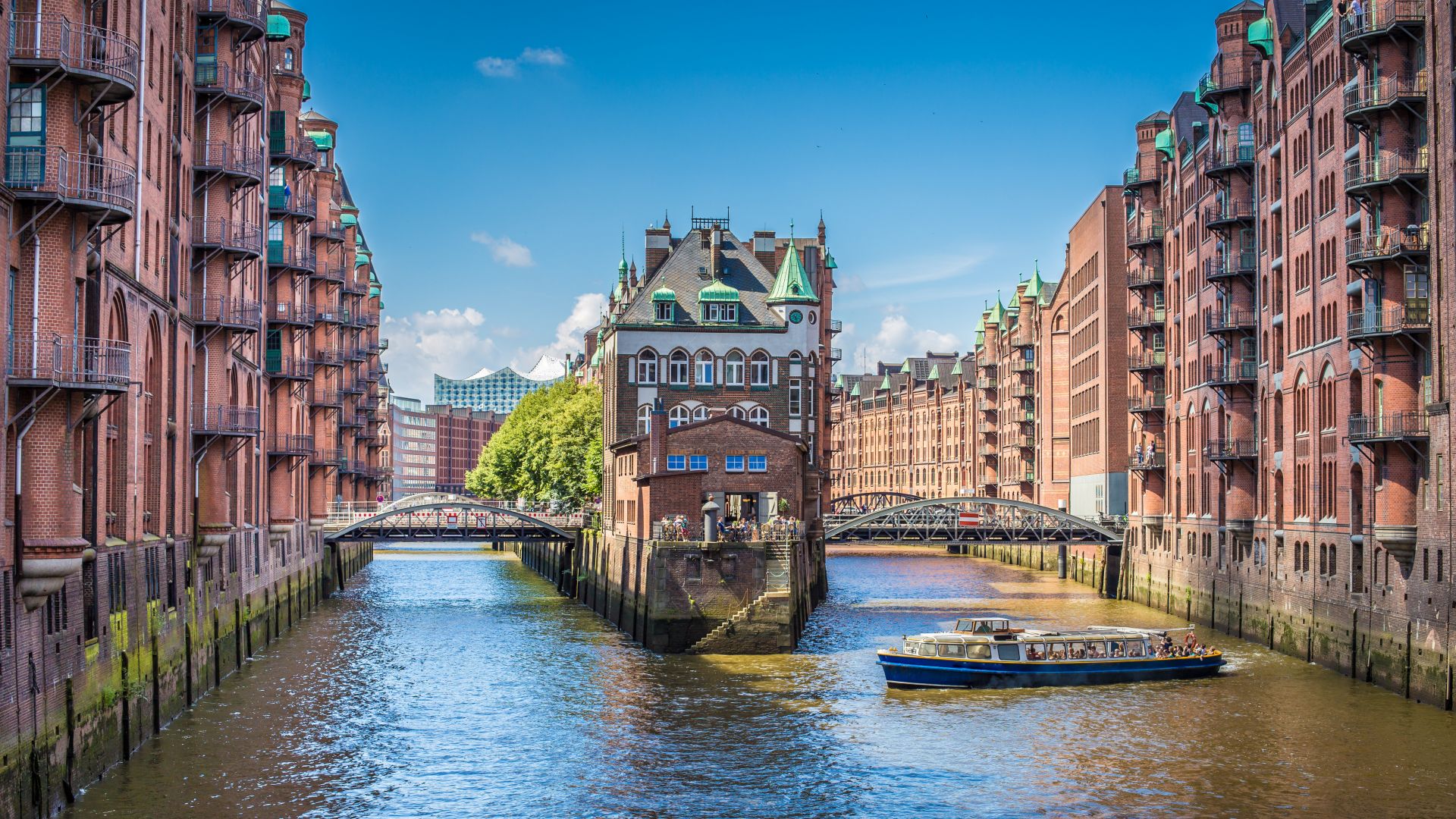 Hamburg warehouse district
©AdobeStock (powell83)
Hamburg warehouse district
©AdobeStock (powell83)
With over 550,000 passengers a day, Hamburg Central Station is one of the busiest in Europe. In addition to its excellent connections to the underground and suburban railway systems, it owes its top ranking to its location not far from the old town, the Landungsbrücken floating dock and the Speicherstadt. There is hardly a better or faster way to immerse yourself in the Hanseatic maritime flair of the Elbe metropolis that is Hamburg . Everything is close by: the Binnenalster lake, Elbphilharmonie, Miniatur Wunderland and plenty of stalls selling fish sandwiches.
Munich: cosy and active
 Monopteros in the English Garden in Munich
©DZT (Dagmar Schwelle)
Monopteros in the English Garden in Munich
©DZT (Dagmar Schwelle)
Munich's Central Station is currently undergoing a complete facelift, including new underground S-Bahn tracks. Meanwhile, the terminus station is already one of the largest in Europe. Every day, hundreds of thousands of commuters, daytrippers heading to mountains and lakes and those travelling around cities board and disembark here. The old town with Marienplatz and the cathedral are just a few minutes' walk away. And you can reach the English Garden, the Allianz Arena and beer gardens quickly and easily by bus and train.
Frankfurt am Main: railway experience meets business
 Frankfurt skyline
©visitfrankfurt (David Vasicek)
Frankfurt skyline
©visitfrankfurt (David Vasicek)
'Mainhattan' has the highest density of skyscrapers in Germany – and Frankfurt's main train station, an impressive building with a neo-baroque façade, is its hub. This also applies to exploring the city beyond business meetings in the towering skyscrapers. Visitors can quickly reach the banks of the Main River with its world-class museums, the Römer, or the narrow streets of Old Sachsenhausen – the latter famous for its apple wine and quaint pubs.
Koblenz: a small city with a great location
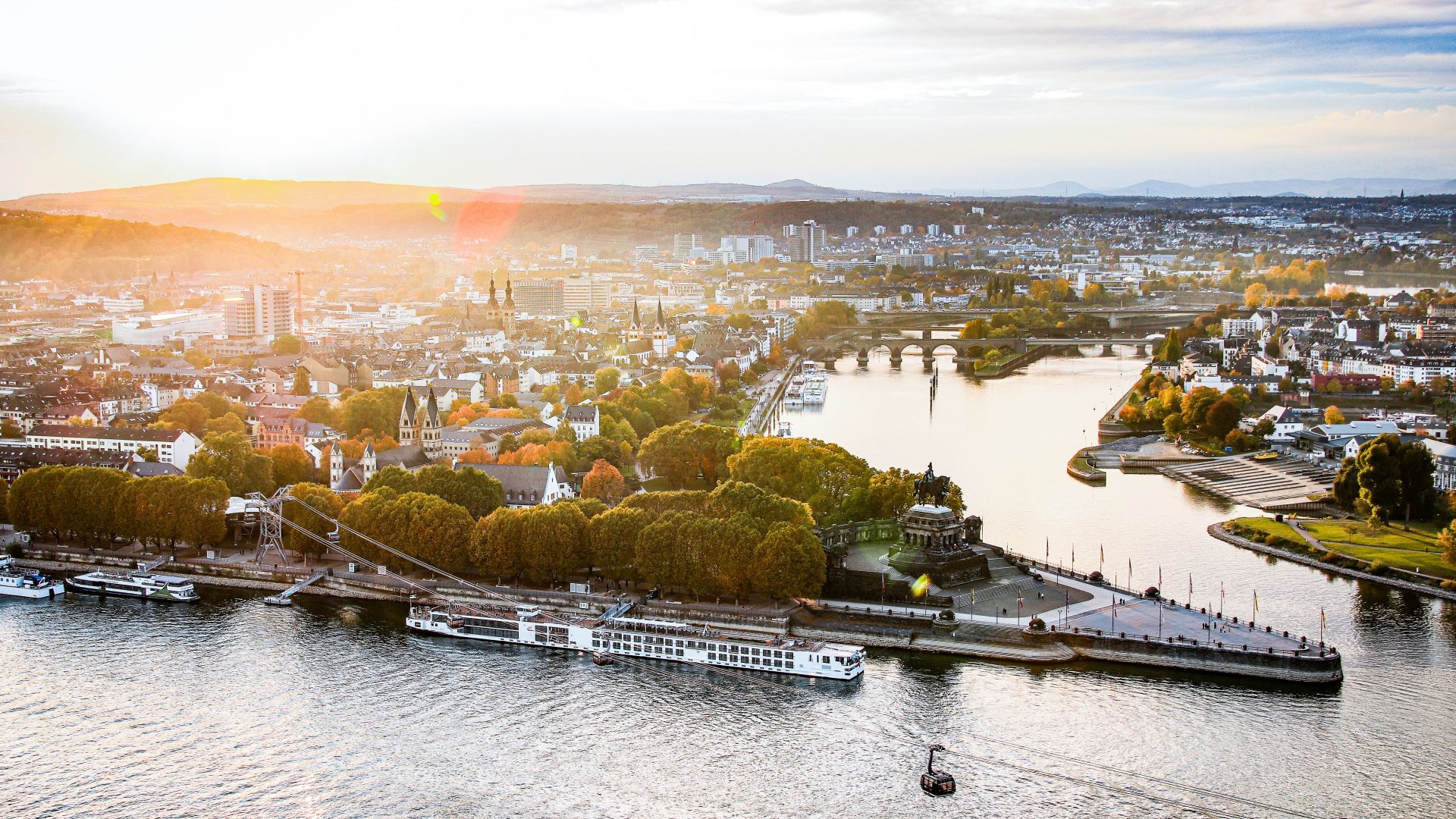 View across the Rhine to the Deutsches Eck
©Koblenz-Touristik GmbH (Johannes Bruchhof)
View across the Rhine to the Deutsches Eck
©Koblenz-Touristik GmbH (Johannes Bruchhof)
On their way to the picturesque Middle Rhine or the equally idyllic Moselle Valley, many travellers bypass Koblenz . This is a mistake, as this over 2,000-year-old city, located at the meeting point of two rivers, is well worth a longer stop. From the train station, it's just a stone's throw to the pretty old town. If you want to continue your journey but take a different route, you can take the cable car across the Rhine up to Ehrenbreitstein Fortress. The view over the German Corner is spectacular.
Leipzig: a grand railway station for Bach and others
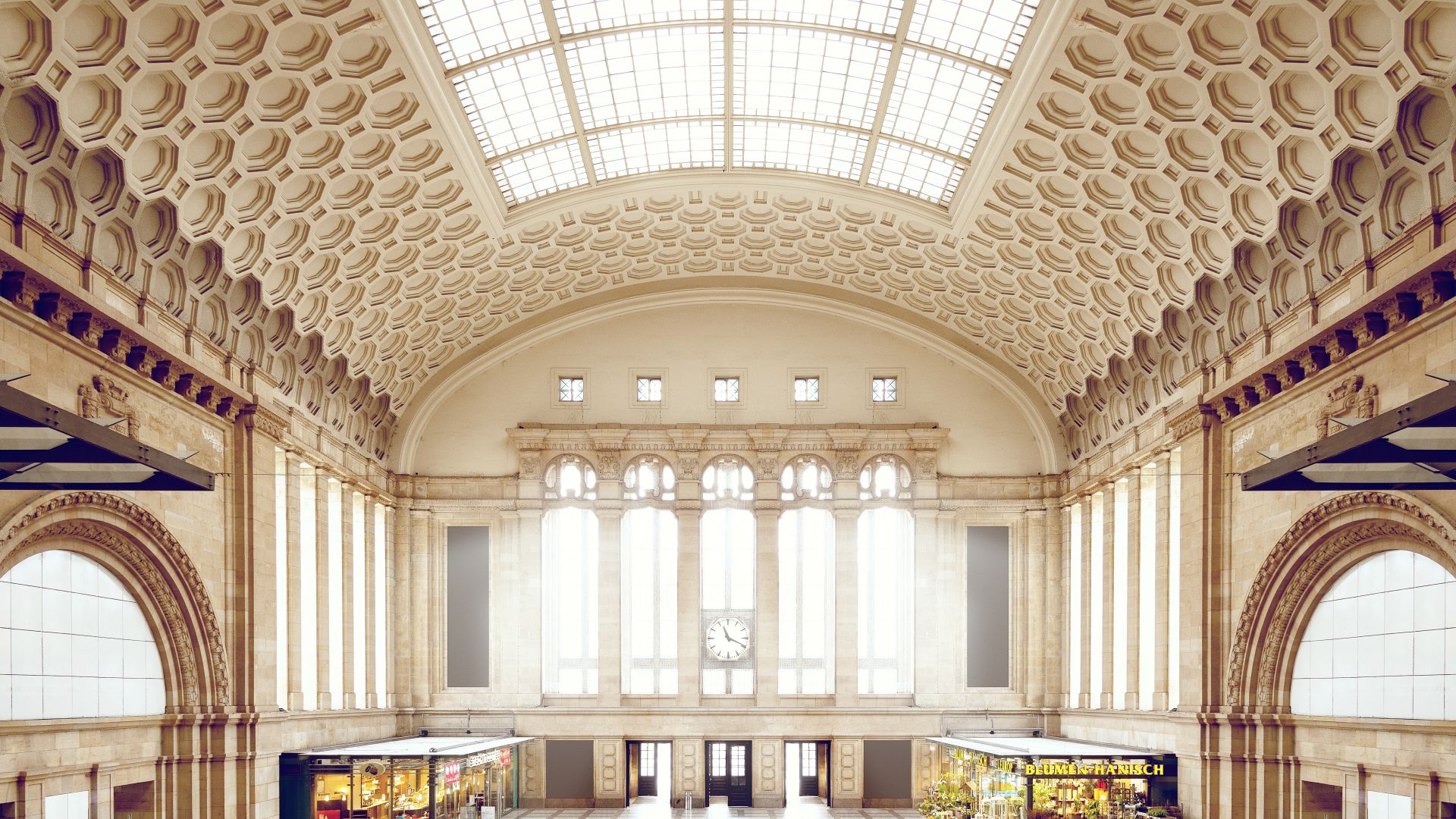 East Hall at Leipzig Central Station
©DZT (Felix Meyer)
East Hall at Leipzig Central Station
©DZT (Felix Meyer)
Covering over 85,000 square metres, Germany's largest railway station in terms of floor space is located in the booming trade fair and university city of Leipzig. It is also impressive: light-filled, grand and both a shopping centre and a monument. Another practical feature is that all of the top sights, such as St. Thomas Church, St. Nicholas Church, the Bach Museum, Goethe's Auerbach's Kellar, the trendy Karli district and even the award-winning zoo, are all located within a 1.5 kilometre radius.
Heidelberg: travel back in time to the Renaissance
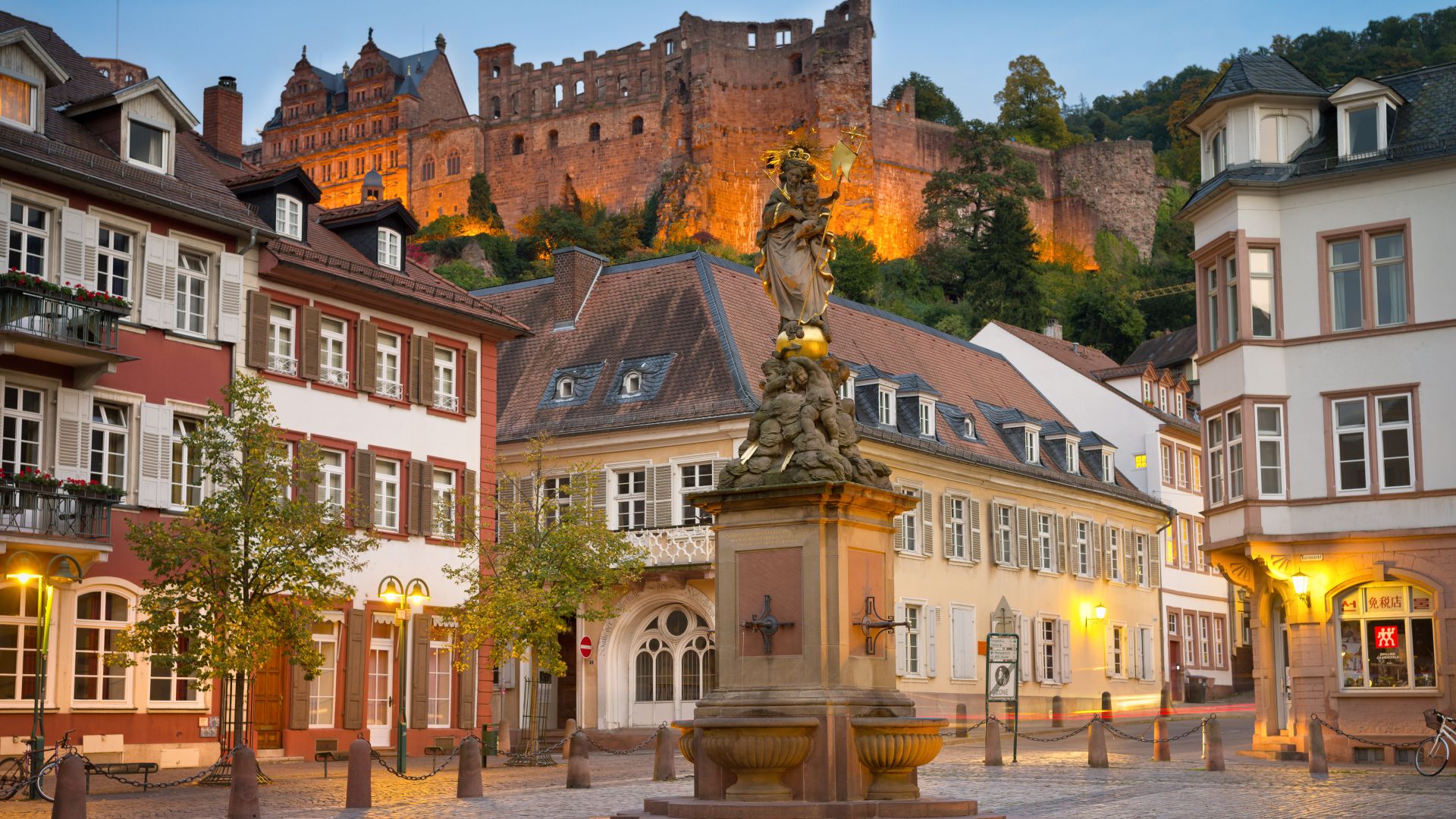 Corn market with castle
©AdobeStock (eyetronic)
Corn market with castle
©AdobeStock (eyetronic)
Its location on the Neckar River, student life centred around Germany's oldest university and historic charm make Heidelberg , which has also been designated a 'City of Literature' by UNESCO, irresistible. If not before, this becomes obvious when you leave the main station and enter the bustling labyrinth of alleys in its baroque old town. The crowning glory: the red castle above the city, a Renaissance jewel and, for many, the most famous ruin in the world.
Dresden: Baroque splendour meets rail-travel comfort
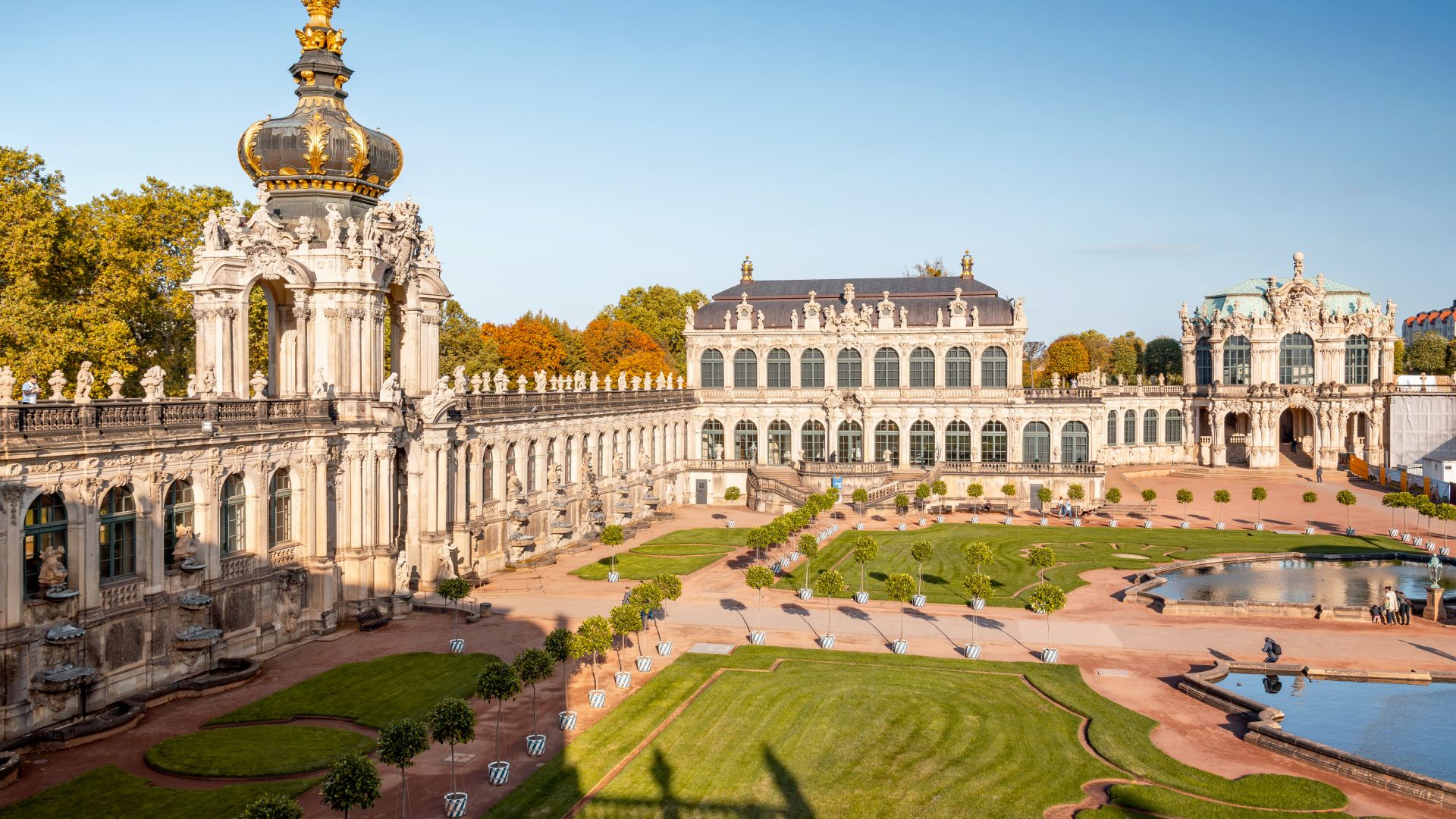 Dresden Zwinger
©DZT (Sebastian Grote)
Dresden Zwinger
©DZT (Sebastian Grote)
Frauenkirche, Zwinger, Semperoper, Residenzschloss: the list of Dresden's five-star attractions is endless. It's no wonder that Saxony's capital city was – and still is – often referred to as 'Florence on the Elbe'. Incidentally, the main railway station, modernised by star architect Norman Foster, is also an attraction. It is light, spacious and at the same time traditional – and on top of that, is the gateway to the baroque old town.
Cologne: old town with rail connections
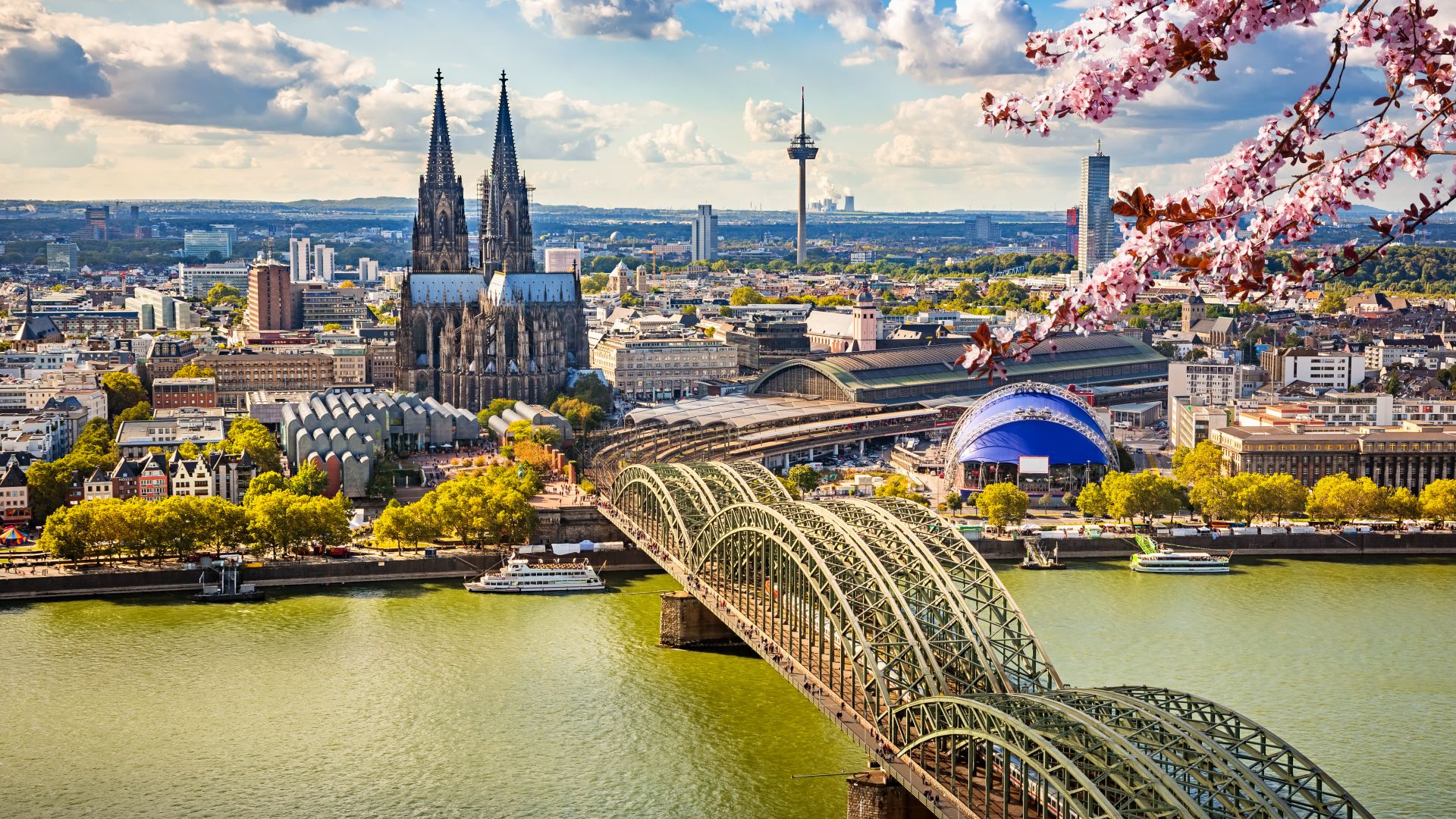 Aerial view of Cologne
©AdobeStock (sborisov)
Aerial view of Cologne
©AdobeStock (sborisov)
Hardly any other central station is as spectacular as the one in Cologne. If you get off here, you'll have a direct view of the city's monumental cathedral. It's a UNESCO World Heritage Site and is a much-celebrated symbol of this metropolis on the Rhine, and not just during Carnival. It towers just around the corner from the station, next to the chocolate museum and the winding old town with its famous Kölsch pubs. Those who are more interested in art should visit the Museum Ludwig, which houses the largest collection of American pop art outside the United States.
Nuremberg: from the railway to the Middle Ages
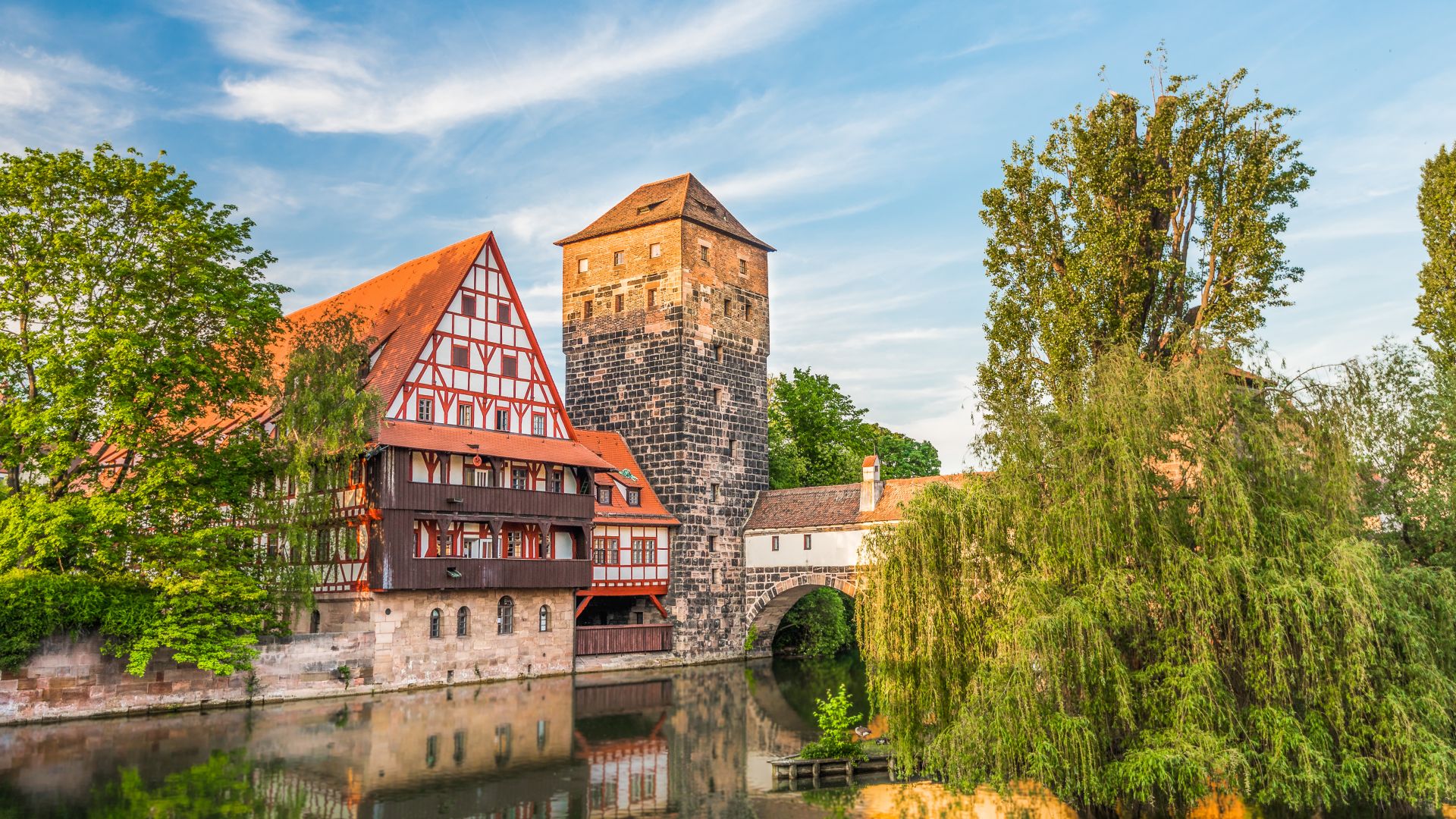 Weinstadl and water tower
©AdobeStock (schulzfoto)
Weinstadl and water tower
©AdobeStock (schulzfoto)
Dürer House, Imperial Castle, Germanisches Nationalmuseum: this Franconian metropolis breathes history. But it also has a vibrant nightlife and modern museums, bringing together the present and the future. Convenient for both short visits and longer stays: Nuremberg Central Station is not only located next to the DB Museum, but it's also opposite the medieval Old Town, which is particularly beautiful during the Christmas season. There is even a special train to the Christkindlesmarkt, which is world-famous not least for its gingerbread.
Freiburg: the sunny side of rail travel
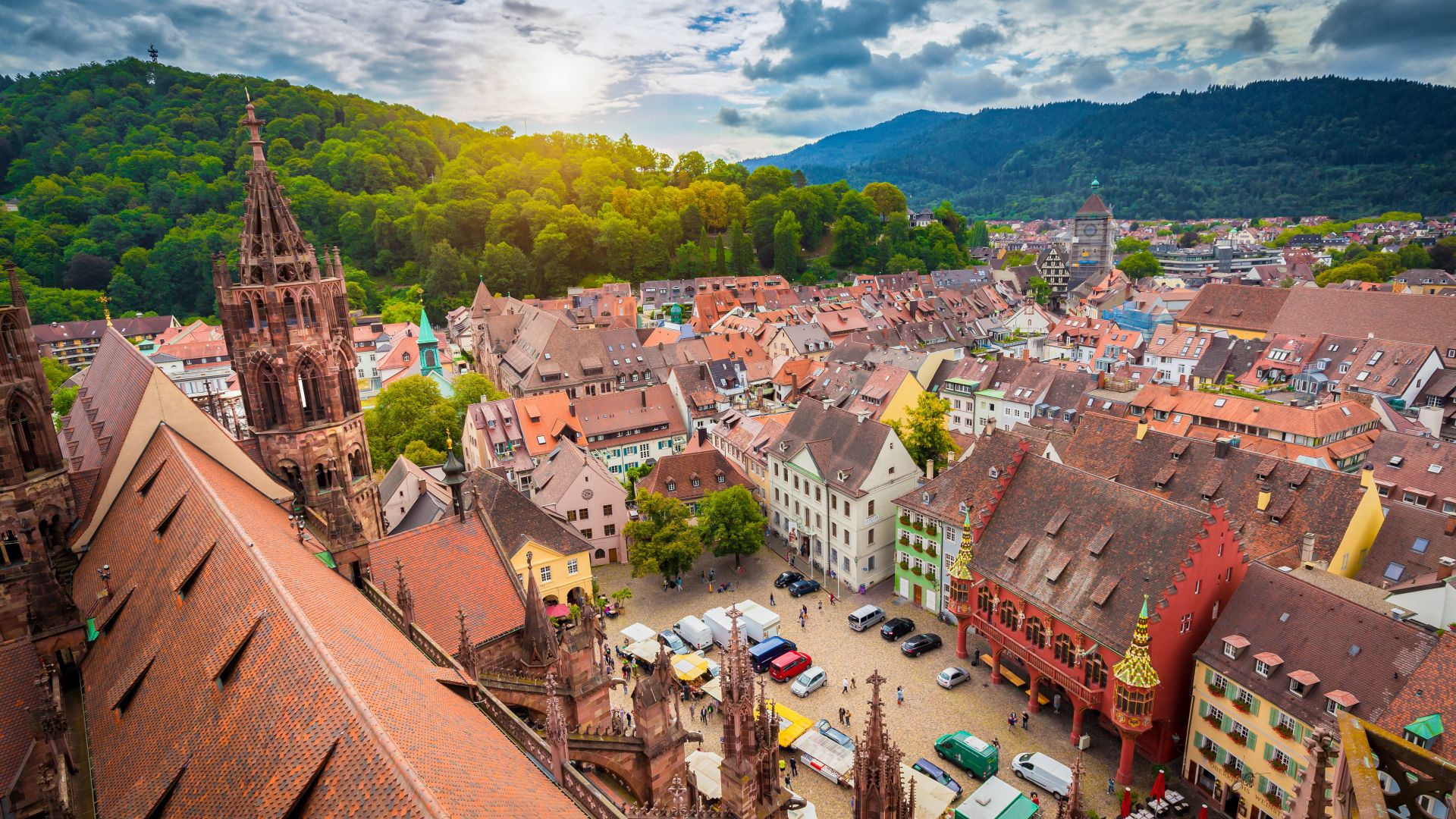 A bird`s eye view of the market square in Freiburg
©AdobeStock (JFL Photography)
A bird`s eye view of the market square in Freiburg
©AdobeStock (JFL Photography)
Germany's third-warmest city – Freiburg – also warms hearts, especially of students and holidaymakers who like things to be convenient. The comfortable train journey alone ensures a pleasant experience, thanks to the central location of Freiburg's modern, multi-award-winning train station. From there, you can head straight to the car-free old town with its cathedral, small streams and charming cafés. Fancy some exercise? The Black Forest, just half an hour away by train, is a paradise for cyclists and hikers.
Regensburg: two UNESCO World Heritage Sites in one
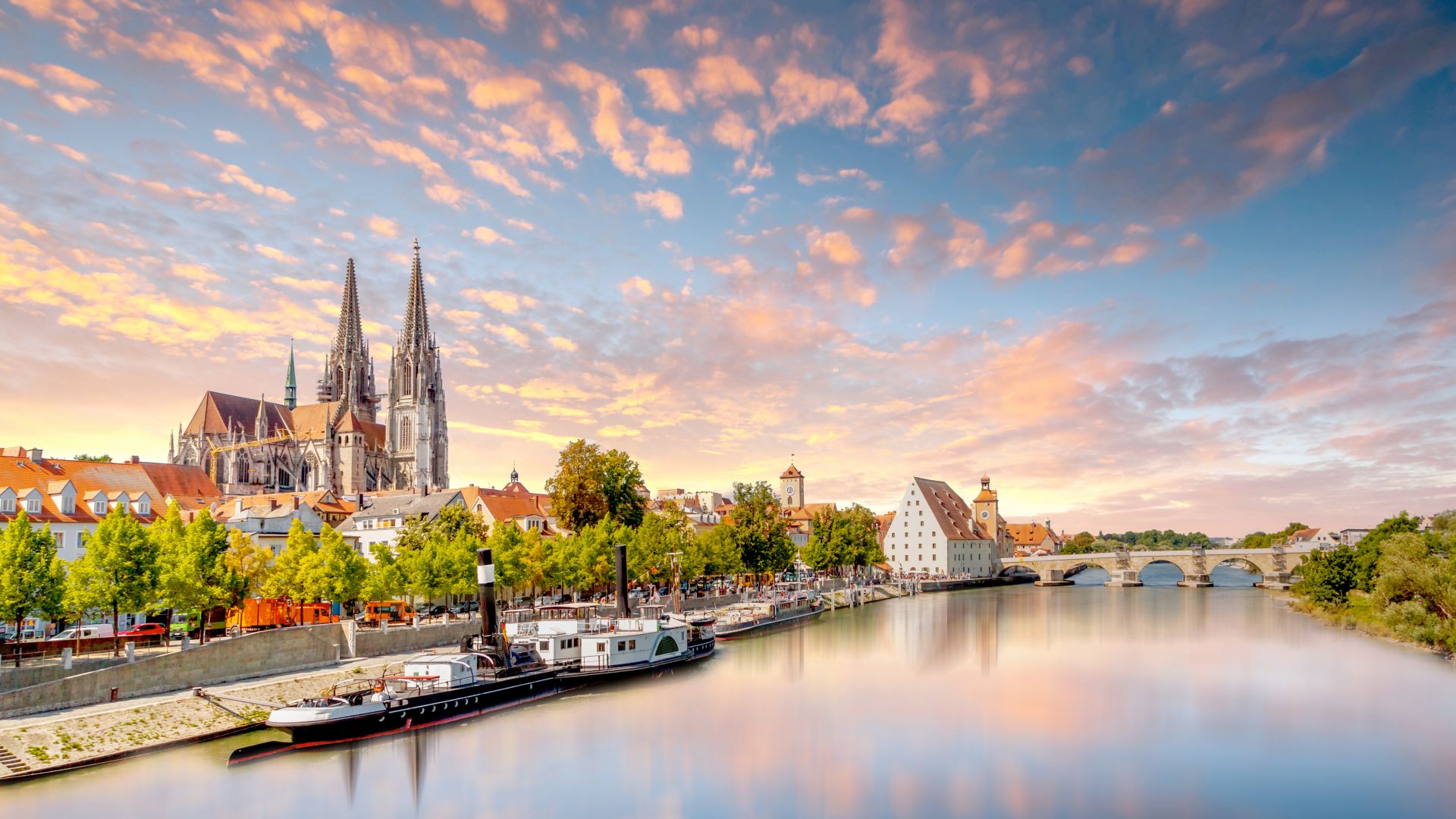 Sunset on the banks of the Danube in Regensburg
©AdobeStock (Sina Ettmer)
Sunset on the banks of the Danube in Regensburg
©AdobeStock (Sina Ettmer)
Often, it's only individual buildings that are declared World Heritage Sites. In the university city of Regensburg on the Danube, UNESCO designated the entire old town as a World Heritage Site. And it's no wonder, since this is Germany's most important collection of medieval buildings. In 2021, a second World Heritage title was added for the Roman Danube Limes. Does that mean everything is old and dusty? Far from it – the highest density of pubs in the country alone speaks volumes. Useful info for those who travel by train instead of by car.
For anyone who wants to explore these twelve cities in a relaxed and flexible way, the German Rail Pass is the ideal choice.